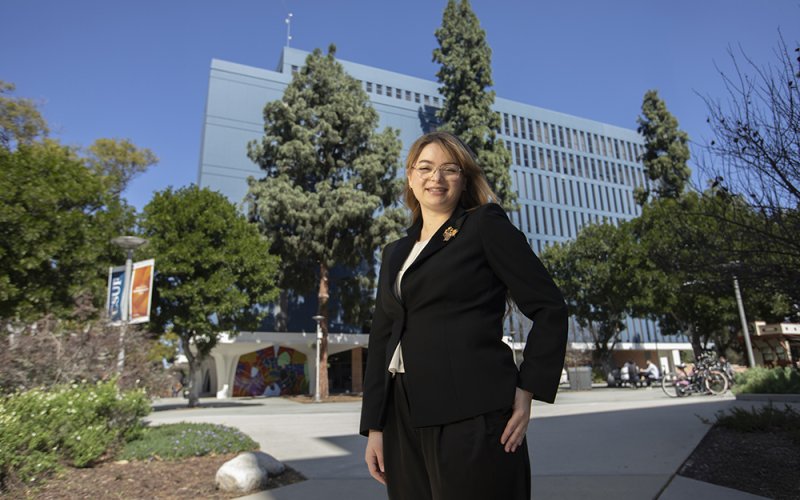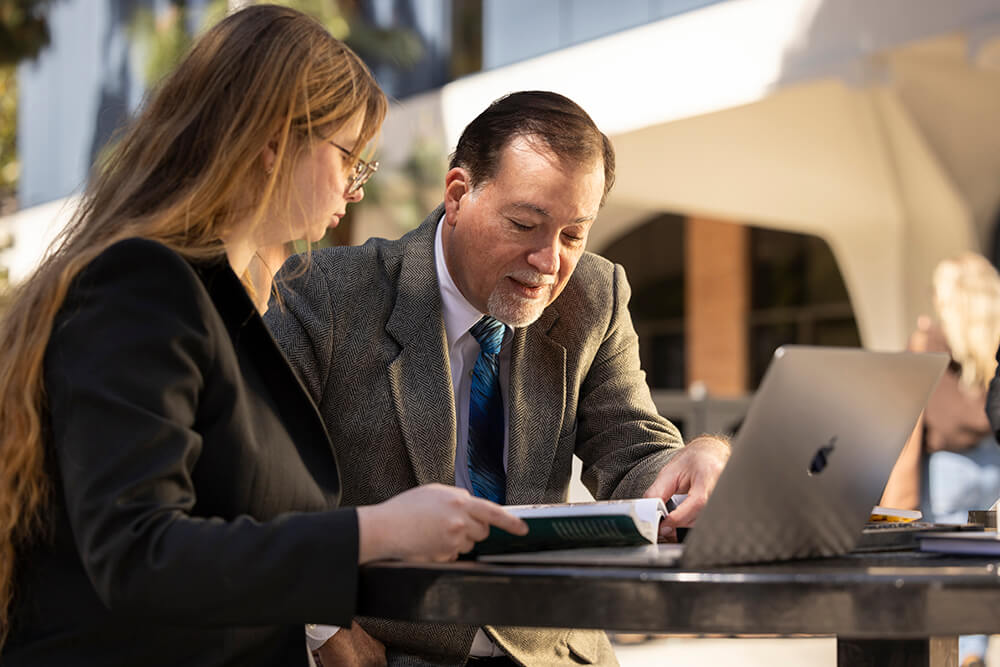
When Natalya Rowe walked along the streets and canals of Amsterdam, she saw her research come to life before her eyes.
At Cal State Fullerton, the Class of 2025 graduate connects her history major and art minor through interdisciplinary research, uncovering how neighborhoods and landmarks in Amsterdam reflect the stories of Sephardic Jewish history.
Supported by the Mellon Mays Undergraduate Fellowship program, Rowe had the opportunity to conduct fieldwork in the Netherlands, where she collected photos and primary sources, and attended the University of Amsterdam — bolstering her research with hands-on experience.
Designed to support undergraduate students as they pursue doctorates in the humanities, the Mellon Mays Undergraduate Fellowship program provided Rowe with financial support for her research and the opportunity to present her findings at numerous conferences, including the UCLA and Whittier Western Regional and Phi Alpha Theta Southern California Regional.
“The MMUF program has afforded me so many incredible privileges and opportunities to network, travel to different conferences and study abroad,” said Rowe, who plans to pursue her doctorate in history and aspires to a career as a university professor.

Rowe analyzes how material culture, migration patterns and religion in the early transatlantic relay stories of power and inclusion. Her research explores how Sephardic Jewish interactions within 17th-century Dutch colonial spaces shaped the making of the modern transatlantic landscape, connecting Europe, North America and Latin America.
“History helps us explain the human connection to everything. It’s about understanding the context of how we got here and how we interact and engage with the world,” said Rowe.
She worked with the Ets Haim Archive in the Netherlands and underwent language training in Spanish and Portuguese to analyze original manuscripts.
Rowe found that when faced with expulsion from Iberia, the Sephardic Jewish community found relative tolerance in Holland, and focused on building shared spaces to protect their culture. One clear example is the Portuguese Synagogue, also called the Esnoga, built in 1675 in Amsterdam. Rowe explained that the synagogue and the neighborhood around it were designed to bring people together and build a strong community.
Embracing Academic Opportunities
She credits her research success to the guidance and mentorship of expert faculty members like Paulo Simões, a cultural and religious historian and lecturer in the University Honors Program.
“She’s doing the research, writing and discovering previously unknown connections. It’s very impressive to see her dedication. Natalya has the interest, focus, knowledge, skill and curiosity that allows her to open avenues to understanding this history in original ways,” said Simões.

Rowe’s research is further supported by the CSU Sally Casanova Pre-Doctoral Scholarship program, which prepares students to succeed in doctoral programs.
As a CSU Sally Casanova Scholar, Rowe presented her research at the CSU Chancellor’s Office and collaborated with faculty at doctoral-granting institutions. Additionally, the fellowship provided funding for research, professional development and graduate school application expenses.
As a student in the President’s Scholars Program, Rowe also received a full scholarship and vital support from the Center for Scholars.
“I felt confident to pursue my goals, and truly, without the President’s Scholars Program, I would not have gotten to where I am today. CSUF gave me the confidence and support that I needed to pursue what I love,” said Rowe.